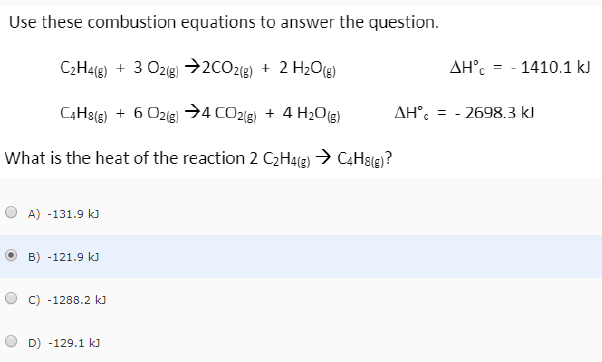Thermochemistry: Use the equations to answer the question.?

2 Answers
This question demands an understanding of Hess's Law,
Consider,
where
where
and the desired product,
This is, to be sure, the first reaction with double the amounts of reactants, and the second reaction reversed. Hence,
The answer you selected should be right. If it's wrong, I would need to rethink the question.
Warning! Long Answer. B) -121.9 kJ
Explanation:
This is a problem in which you must use Hess' Law, which states that the energy involved in a chemical process is the same whether the process takes place in one or in several steps.
You are given two equations:
From these, you must devise the target equation
The target equation has
When you double an equation, you double its
Equation (4) has
You need an equation with
Reverse Equation (2).
When you reverse an equation, you change the sign of its
Now, you add equations (4) and (5), cancelling species that appear on opposite sides of the reaction arrows.
When you add equations, you add their
This gives us the target equation (6):
When you add two equations, you add their


